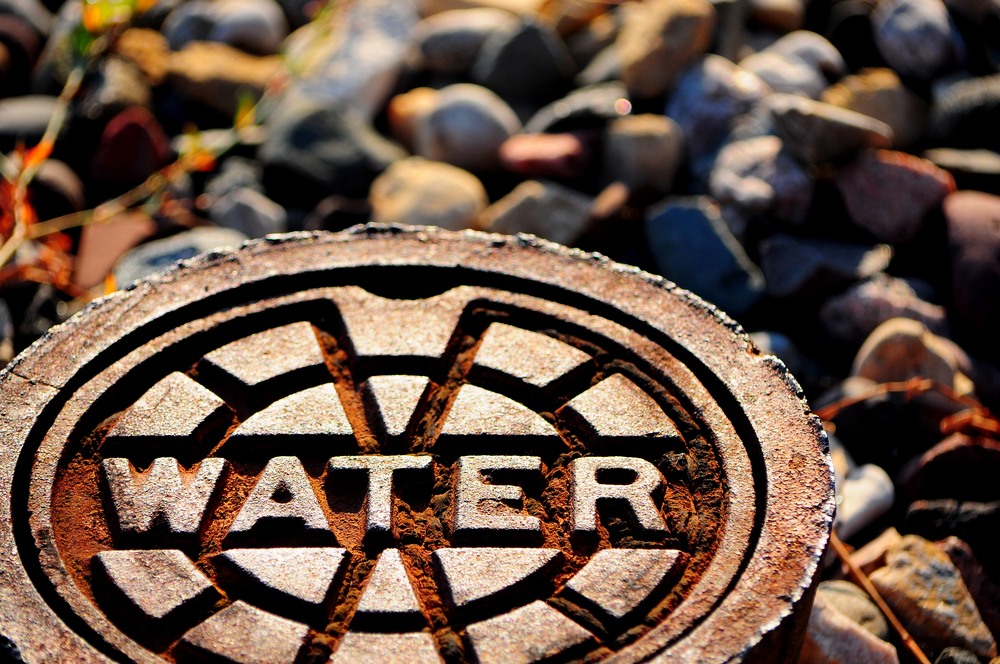The primary goal of California’s investor-owned water utilities (IOUs) is to provide customers with safe, high-quality and reliable water service. To accomplish this, IOUs spend millions of dollars annually on maintaining and replacing aging infrastructure or building new infrastructure to keep the water flowing.
In 2014, California Water Association (CWA) members, who account for service to about 6 million Californians, invested more than $400 million on needed water infrastructure. Some of that investment is illustrated in the following table:
| Investor-Owned Water Utilities | 2014 Infrastructure Investments |
| Apple Valley Ranchos Water Company (approximately 22,000 service connections in San Bernardino County) | $8,166,239, including nine main replacement projects with approximately 5.5 miles of aging water mains replaced. Of those projects, the Rancherias Easement Phase 3 Project and the Standing Rock Phases 1 and 2 Projects included installing 1.26 miles of 20” main to improve transmission capabilities as well as replace aging, undersized mains. The aging booster pump station for the Youngstown Pressure Zone also was replaced to improve supply reliability and pumping capabilities for that portion of the water system. |
| California American Water (approximately 186,000 service connections throughout the state) | Approximately $85 million, including:
|
| California Water Service Company (approximately 510,000 service connections throughout the state) | Approximately $128 million, including the installation of 81,000 feet of new/replacement water main and the construction of two wells, seven storage tanks and one granular-activated carbon treatment facility |
| Golden State Water Company (approximately 258,000 service connections throughout the state) | Approximately $66 million, including installation of new and replacement water mains, installation of several hundred water meters on unmetered services, interior and exterior recoating of steel water storage reservoirs, construction of new welded steel reservoirs, completion of new groundwater wells, and installation of well head treatment systems. |
| Park Water Company (Central Basin Division – approximately 29,000 service connections in L.A. County) | $13,810,118. Significant projects included:
|
| San Gabriel Valley Water Company (approximately 94,000 service connections in L.A. and San Bernardino Counties) | $32.2 million of utility plant additions in San Gabriel’s Los Angeles County and Fontana Water Company divisions, including two new wells, a new reservoir and booster pump station, and nearly 11 miles of water mains. |
| San Jose Water Company (approximately 224,000 service connections in Santa Clara County) | Approximately $82 million, including:
|
| Suburban Water Systems (approximately 75,000 service connections in L.A. County) | $14,254,297 – Suburban started the construction of the first of two concrete reservoirs, known as Plant 224 R-1. Plant 224 R-1 is a 2.37 million-gallon reservoir that is 24-feet tall and was constructed with 30-inch thick walls, 30-inch footings, 18-inch thick floor slab and a 9-inch thick roof. The reservoir took about six months to construct and used approximately 2,800 cubic yards of concrete from 300 concrete truck loads. It is anticipated that the second reservoir will have a capacity of 4.69 million gallons and will be completed in October 2015. |
Water-industry infrastructure includes the various components that pump, divert, transport, store, treat and deliver safe drinking water. These may consist of groundwater wells, surface-water intakes, dams, reservoirs, aqueducts, storage tanks, treatment facilities and pipes. And to meet increasingly stringent regulatory standards, many water systems require improved technologies and upgraded infrastructure.
According to the American Society of Civil Engineers’ 2013 Report Card for America’s Infrastructure, California reported $44.5 billion in drinking water infrastructure needs and $29.9 billion in wastewater infrastructure needs during the next 20 years.
The IOUs’ infrastructure expenditures not only serve to provide safe and reliable water, they also generate jobs and contribute to the state and local economies through taxes and purchasing products and services.
(PICTURE: Suburban Water Systems employees tour the interior of the newly constructed reservoirs at Plant 224.)





